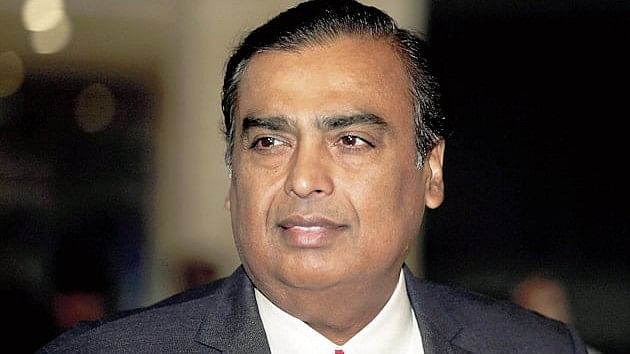
Mukesh Ambani, Chairman and Managing Director of Reliance Industries, arrives to address the company's annual general meeting in Mumbai.
Credit: Reuters File Photo
New Delhi: Reliance Industries Limited (RIL) on Friday reported 5.5 per cent year-on-year decline in its consolidated net profit for the quarter ended June 2024 due to weak “operating environment” in O2C (oil-to-chemicals) businesses and higher depreciation expenses.
Consolidated net profit of oil to telecom conglomerate declined to Rs 15,138 crore for April-June quarter from Rs 16,011 crore recorded in the corresponding period of the last year, registering a decline of 5.45 per cent.
The company’s gross revenue for the quarter under review increased by 11.5 per cent year-on-year to Rs 257,823 crore. The revenue growth was led by higher oil and gas prices with strong growth in volumes. Steady growth in consumer businesses also contributed to increase in revenue.
“Consolidated EBITDA for the quarter improved from a year ago with strong contribution from consumer and upstream businesses offsetting weak O2C operating environment," RIL Chairman and Managing Director Mukesh Ambani said in a statement.
Consolidated EBITDA (earnings before interest, taxes, depreciation, and amortisation) increased by 2 per cent to Rs 42,748 crore.
The company’s profit during the quarter under review was sharply lower than the analysts’ estimate while the revenue was largely in line with the expectations. Share price of Reliance Industries dipped 1.92 per cent to Rs 3109.50 at the BSE. The company’s financial results were announced after the market trading closed.
Reliance’s O2C segment revenue for the first quarter of 2024-25 increased by 18.1 per cent year-on-year to Rs 157,133 crore primarily on account of higher product prices tracking around 9 per cent increase in Brent crude oil prices, and higher volumes supported by strong domestic demand.
However, profit margin in the segment was depressed. O2C segment’s EBITDA dipped by 14.3 per cent during the period under review due to lower transportation fuel cracks, particularly gasoline cracks, which dipped by 30 per cent year-on-year. Downstream chemical margins were also lower 15 per cent-17 per cent on a year-on-year basis. However, oil and gas segment EBITDA increased by 29.8 per cent on account of higher volumes from KG D6.
O2C refers to RIL’s oil to chemicals business, which includes refining, petrochemicals, and fuel retailing segments.
The company's depreciation surged by 15.5 per cent year-on-year to Rs 13,596 crore on expanded asset base across all the businesses, higher network utilisation in Digital Services business, higher retail store count and ramp-up in upstream production. Finance costs increased by 1 per cent year-on-year to Rs 5,918 crore, primarily due to higher interest rates.
According to Ambani, the company’s digital services business registered an “impressive financial performance”.
Reliance Jio Infocomm net profit jumped by 12 per cent to Rs 5,445 crore for the quarter ended June 30 as compared to Rs 4,863 crore recorded in the corresponding period of the last year.
“Jio’s True 5G network, covering 85 per cent of India’s 5G capacity, continues to attract users, while the fixed broadband offerings are witnessing increasing consumer traction both in homes and enterprises,” Ambani said.
“The attractive value proposition offered by Jio is enabling more Indians to transition to next-gen data networks. This is further accelerating the digital revolution which is reshaping communications, analytics and computing, media and entertainment and commerce in India,” he added.
Net profit of Reliance Retail Ventures increased by 4.6 per cent year-on-year to Rs 2,549 crore for the April-June quarter.